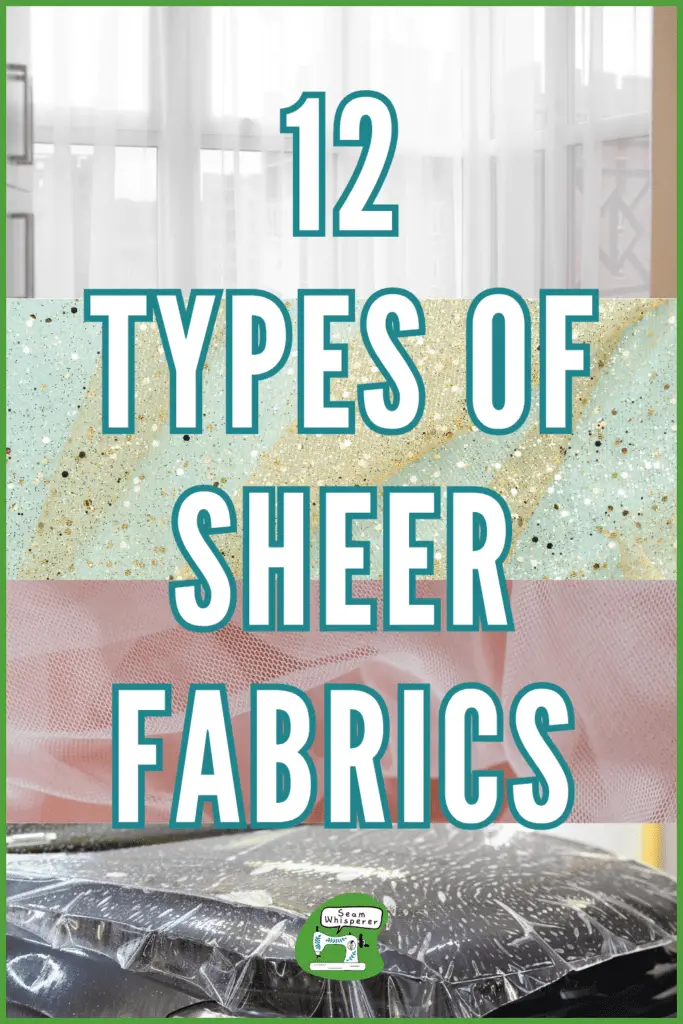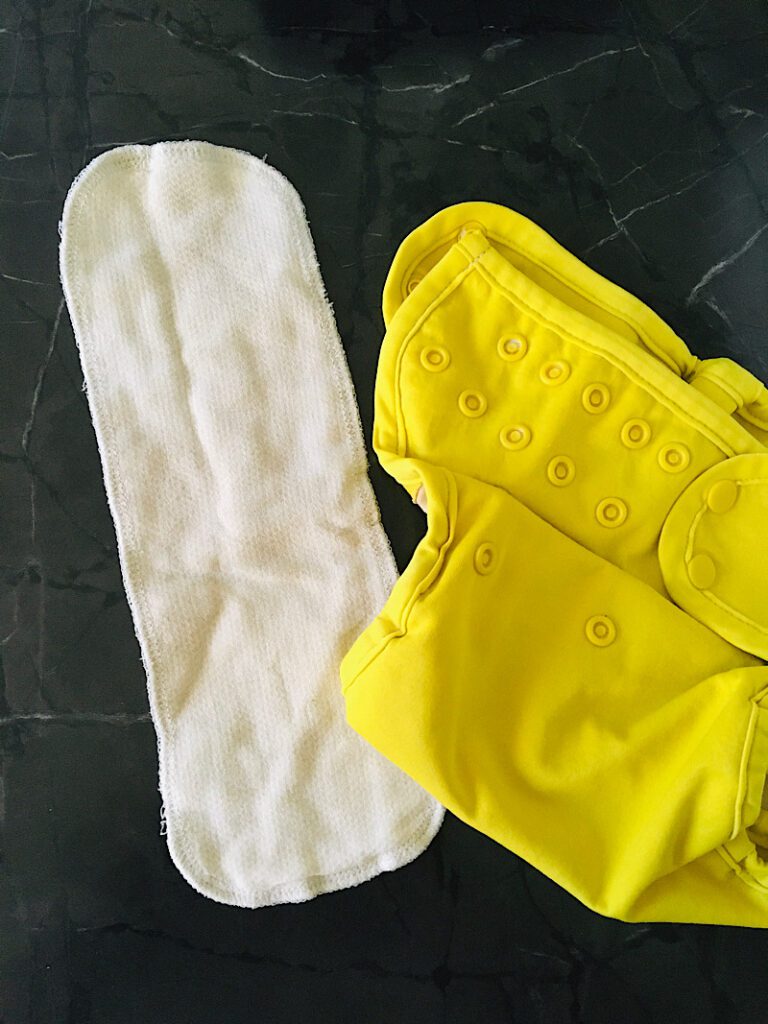This laundry apron is perfect for holding clothespins when you are hanging your clothes on the line. The cross back feature helps hold the weight of the pins so it doesn’t slip down!
This week after sharing my simple pioneer apron pattern, I received an email request from one of my blog readers to make a clothes pin apron, and I was intrigued because I have never used of a clothespin apron before! She sent me some photos, I caught the vision and was happy to try it out.
I think what I came up with turned out SO cute, and can be used for lots of things! Whether you call it a laundry apron, clothespin apron, gathering apron, egg apron, or even a toy apron, it’s deep pockets are super useful and it’s long straps can fit many sizes, tied on the front or back.
Thanks for your suggestion, Shelley! Let’s sew!

Supplies Needed:
- 2 Yards of cotton fabric, ideally double sided (the pocket portion is made by folding fabric in half, so without a double sided material you will see a couple inches of the back on the front of the apron, but it will still look great!)
- Coordinating thread
- Pen or marking tool
- Iron & Ironing board
- Rotary mat & acrylic ruler (optional)
- All the basic sewing stuff 🙂

How To Make A Clothespin Apron
P.S, I’m sorry about the dark pictures on this one. We don’t run a magazine here, this is real life folks!
Step 1. Cut Your Fabric
From your 2 yards of fabric, cut out the following pieces: (Use the chart to see the cutting orientation if you have a directional pattern)

- 2 – 5″x72″
- 1 – 36″x26″
- 2 – 12″x18″
- 2 – 2″x6″

Step 2. Make Loops
With the 2″x6″ pieces, we are going to make two little “belt loops”.
Fold the long side edges into the center of the strip (with the right side of the fabric facing out), then fold it in half lengthwise. Pin it in place.

Sew down the open edge with a 1/8th inch seam allowance. Then repeat with the other strip of fabric.

Put these aside for now.
Step 3. Make The Ties
(You can make both ties at the same time step by step, or make one entirely, then make the other)
Fold the 5″x72″ strip in half lengthwise, with the right sides together. Pin it in place. Sew down the long edge, and ONE of the short edges with a 3/8ths inch seam allowance.


Clip the corner of the tie to remove the excess fabric, about 1/4 inch away from the stitch line.

Turn the tie right side out. Here is how I like to do it:
Use your thumbs to poke in the sewn end of the tie an inch or two.

Then, insert the end of a wooden spoon or another long blunt object, and push it through.


Once the tip of the spoon pokes out the other end, you can grab the fabric tip, pull out the spoon, then pull the fabric through itself to turn it.
Work the corners out until they are nicely shaped.

Press the tie on your ironing board, then sew a top stitch around the perimeter to make it crisp.

If you haven’t already, repeat these steps to make the second tie.
Set them aside for now.
Step 4. Make The Apron Bodice
Fold the 12″x18″ piece in half lengthwise (so it is 12″x9″ when folded)
Make sure the fold is on the left side. On the top edge, measure out from the fold 6.5″, and mark it. (I used a pin at first because I was making this up as I went. You can just mark it with a pen.)

Now from the top RIGHT corner, measure down 8.5″ and mark it with a pen.

Using an acrylic ruler or another straight object (like a book), line up the straight edge with both marks, and mark the line.


Now cut off the corner along that line.
Then, use that piece of fabric to cut the other piece the same way. (You can lay it on top to cut the corners off the piece beneath it).
Now place both pieces together with the right sides facing, and sew down both of the diagonal corner lines with a 3/8ths seam allowance. (Leave the top open, and the two short sides open.)
This will be your apron bodice.

Now grab your two little “belt loops” you made.
Fold one of them in half, and place it inside the apron bodice on the side under the diagonal seam you just made, with the raw edges aligned with the raw edges of the bodice. Pin it in place.

Fold and position the other loop on the other side, the same way.

Fold the flap down, and sew down both short sides of the apron bodice, catching the loop ends as you sew.

Now lets attach the ties.
Slip the open end of one of the ties inside the layers of the bodice, and position it into the corner, with the short edge of the tie along the top edge of the bodice. Pin it in place.

Then position the other tie the same way, into the other corner.

Sew along the top edge of the bodice with a 5/8ths inch seam allowance, making sure to also sew through the ties.
Clip off the two top corners about 1/4″ away from the corner stitch.

Now turn the bodice right side out and poke out the corners, and shape it well.

Press the bodice, then sew a topstitch around the seams to make it crisp.

Put it aside for now.
Step 5. Make The Apron Skirt
Get the 26″x36″ piece of fabric, and orient it so the top of the fabric pattern (if it is a directional pattern) is on top.
Fold the top 36″ edge of the fabric towards the wrong side 1/2 an inch, then 1/2 an inch again. Pin it, then sew it to make a hem.

Now place the fabric on the table with the wrong side facing up, and the hemmed edge on the bottom.
Fold the bottom hemmed edge up until it is about 3 inches away from the top raw edge. This will make a “pocket”. The right side should be facing out on front of the pocket, with the 3 inches above the pocket showing the wrong side.
Put a few pins along the hemmed edge and sides to hold it in place.

Now hem both sides of the apron skirt by folding the edge towards the back 1/2 an inch, making sure both layers are folded together. Then fold it over 1/2 an inch again and pin it. Then sew down the fold .

Now you have a skirt with a huge pocket on front.

You can leave it huge, but it might sag. I decided to divide it up.
You can sew it into two large pockets by sewing a vertical line in the middle of the pocket from the bottom to the top, or make it into three pockets by sewing 2 vertical lines to divide it into thirds.
I eyeballed mine, but you can measure out and mark where you want to sew with pins.

Step 6. Attach Skirt To Apron Bodice
Change your machine stitch length to the longest it will go. Sew a basting stitch along the top raw edge of the apron skirt (don’t backstitch at the beginning or end.)
To gather the skirt, gently pull on one of the side threads to bunch up the fabric. Continue gathering it until it reduces in width to about 17″, the same width as the bottom of the bodice.

Align the raw edge of the skirt, with the raw edge of the bodice, with the back of the skirt facing the back of the bodice. Make sure the gathers are spaced evenly from seam to seam, and pin it to the bodice.

Sew along the raw edge to attach the skirt to the bodice. Don’t sew through the front layer of the bodice, just the back.
Now flip the bodice up, and point the raw edge you just sewed upwards, so it is in between the two bodice layers. Fold the front layer of the bodice under, towards the inside, 3/8ths of an inch, and pin it so that the fold is just barely covering the stitch line you just previously sewed.

Now sew a top stitch 1/8th inch away from the fold. This encases the raw edge inside!

Now the apron is complete!

Step 7. Thread The Ties
To thread the ties you simply cross the tie down to the opposite loop and thread it through. It will make an X across your back.


Then you can tie the bow in the back, or wrap it around to the front, whatever you like.




The pockets are nice and roomy and the ties are totally size adjustable, which will be great for me when I am pregnant again.

I hope you liked this tutorial, I know the photos are not great today. Let me know if you have questions or need something clarified!





How do I print the pattern in PDF form?
Hi Barbara! The only way for you to really do it without copy pasting everything would make it use up a lot of ink because of the image backgrounds. I could make a pdf version but it would take a couple days and it would go up in my pattern shop for a few dollars, but I would make it printer friendly so it uses less ink! Would you be interested in that?